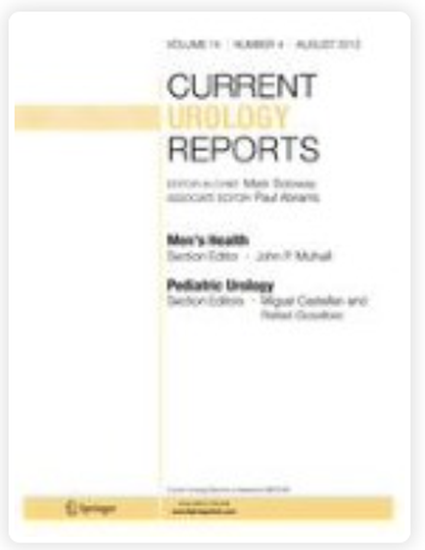
Article
Erectile Dysfunction Secondary to Nerve-Sparing Radical Retropubic Prostatectomy: Comparative Phosphodiesterase-5 Inhibitor Efficacy for Therapy and Novel Prevention Strategies
Current Urology Reports
(2004)
Abstract
Postprostatectomy erectile dysfunction appears to be initiated by neuropraxia and perpetuated by cavernosal smooth muscle apoptosis. Phosphodiesterase-5 (PDE-5) inhibitor therapy is the current cornerstone of erectile dysfunction (ED) therapy in this population. Although no head-to-head trials have been performed with sildenafil, vardenafil, and tadalafil in this population, there are numerous studies in the general ED population. The results of these studies demonstrate that neither of the new PDE-5 inhibitors met statistical noninferiority to sildenafil. Sildenafil has been studied in a novel primary prevention modality using nightly administration after a bilateral nerve-sparing prostatectomy. In this novel approach, it effected a sevenfold improvement in return of spontaneous, normal erectile function 2 months after drug discontinuation. This effect appears to be mediated by properties unique to sildenafil that include improved endothelial function and neuronal regeneration and neuroprotection. In primary prevention, unlike ED therapy, one has only “one shot” by definition. Therefore, it is even more critical to apply evidence-based medicine.
Disciplines
Publication Date
November, 2004
DOI
10.1007/s11934-004-0072-0
Citation Information
Harin Padma-Nathan, Andrew McCullough and Christopher Forest. "Erectile Dysfunction Secondary to Nerve-Sparing Radical Retropubic Prostatectomy: Comparative Phosphodiesterase-5 Inhibitor Efficacy for Therapy and Novel Prevention Strategies" Current Urology Reports Vol. 5 Iss. 6 (2004) p. 467 - 471 Available at: http://works.bepress.com/christopher-forest/29/
